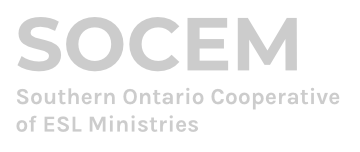Dwight Gradin, Mission Training International (http://www.mti.org/)
If you see language learning as an academic course of study, you will approach it that way. Some people have only one model, one way to engage any intense learning experience: “Hit the books; study like mad; cram at the last minute.”
Hopefully, the following will give you a better way to look at language and language learning. Ponder the significance of each statement. It should influence your thinking in a certain way.
First a couple important distinctions before getting into the statements:
First-versus-second (or child-versus-adult) language learning. Obviously, you cannot learn another language like you learned your first one because ‘the slate is no longer clean’. You have already gone through the process and have ‘locked in’ to basically one linguistic pattern. (Note: When little children enter another language, they are still in their first language learning stage and so take in the next language as part of that developmental process. In fact, some children treat it all as one language; they just talk differently, depending on the person they’re talking to.)
Language acquisition-versus-language learning. Technically, acquisition happens without conscious effort and learning happens by conscious effort (and hard study). Little children get their language(s) mostly by acquisition. Adults try to learn language by hard study with much effort. However, as necessary as study is, adults can get much of a new language via acquisition if it is structured properly, as we shall see.
Summary of the 5 statements:
- Language is a human ability. You acquired your first one almost automatically. Understanding key elements of that first process will help in learning the next one. There is one element you should use and one you shouldn’t.
- Language is a personal production. You developed your own unique version of your native language. You will do the same thing this time. There’s good news and bad news about that.
- Language is a social activity, not an academic exercise. Language has one main purpose: to communicate. This tells us where the emphasis should be placed as you learn the new one.
- Language is a cultural expression. As you send and receive messages in your own language, the full meanings and assumptions are automatically there because you have had years of experience in it. This raises certain issues and pitfalls as you attempt to learn this new language.
- Language is a structured system. It has rules. As you acquired you mother tongue, you naturally assimilated the grammar rules. Some of that can happen this time as well.
Now the amplification…
